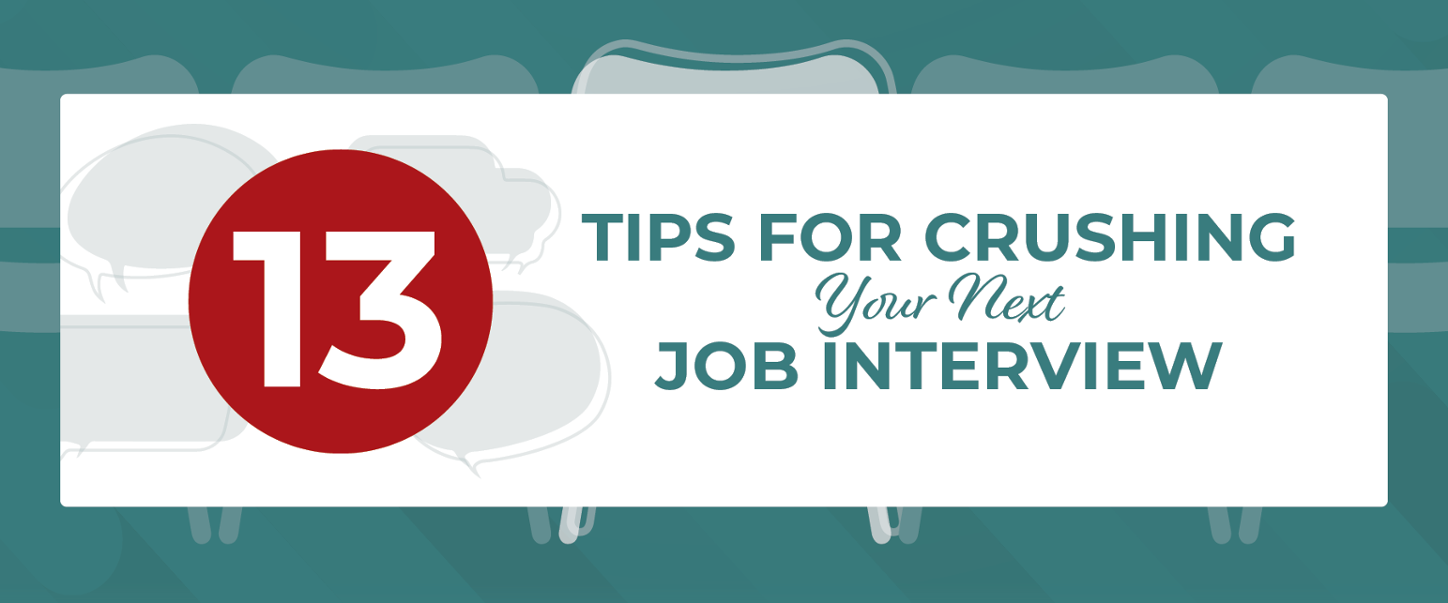 First impressions matter — especially when it comes to landing your dream job.
First impressions matter — especially when it comes to landing your dream job.
Princeton University studies have shown it takes as little as a tenth of a second to make a first impression. It turns out longer exposure to that person doesn’t really change that first impression either.
So how can you make a good first impression when you show up to an interview? How you dress is a good start.
Here at Anderson Trucking Service (ATS), we’ve been hiring people since 1955 in a wide variety of positions. While dress codes have changed quite a bit over the past seven decades, their importance hasn't.
In this article, we’ll explain:
- Why dress codes are important
- Common dress codes
- What to wear to an interview
- Piercings and tattoos in the workplace
Why Are Dress Codes Important?
Dress codes are important for a variety of reasons, including professionalism, safety, cohesion, and confidence. What each of us considers acceptable for a workplace will differ based on our backgrounds. If the company sets a dress code, nobody has to worry about dressing “improperly.” The guidelines have been set. Follow the rules and you’ll be just fine.
In many cases, dress codes exist to maintain a “professional appearance,” whatever the company’s leadership determines that is. That can vary wildly depending on the culture and values of the organization. Some organizations may feel it’s important to maintain a business professional appearance, while others think wearing casual clothing every day is perfectly acceptable.
Dress codes can be necessary for safety depending on the role team members are performing. Personal protective equipment is implemented in some dress codes to keep team members safe and protected from injuries on the job.
Whether or not your role — or other roles within the company — regularly requires you to meet with customers and prospects can also impact a dress code. What those customers and prospects consider to be professional can also vary wildly, so following a specific dress code set forth by your company promotes cohesion, establishes a strong reputation, and creates a good impression.
Dress codes can instill productivity and increase confidence in team members. It's true: When you look good, you feel good. This can give you the extra motivation you need to go above and beyond at work. It's also true that when you wear "work clothes," you're more likely to be productive.
What are the Most Common Dress Codes?
While the names may vary slightly, the most common dress codes are business formal, business professional, business casual, and casual. Like the names, what’s acceptable to wear in each category can vary slightly by company. We’ll highlight the common understanding of what’s acceptable to wear by category.
What is Business Formal?
Business formal can be used to describe attire you’d wear when attending a formal event, like award ceremonies and special dinners or benefits.
Clothing you’d expect to see in a business formal setting is a full matching suit — the darker the more formal — and tie, paired with a light-colored button-down shirt. A bright, bold tie isn't recommended; instead, it should match the suit and dress shirt. Pantsuits, skirt suits, or suit dresses are common for women. Clean dress shoes, flats, or open-toed andclosed-toed heels are acceptable.
What to Wear to a Business Formal Interview: A black suit or pantsuit, white button-down, neutral colored tie (if applicable), a black belt if needed, and clean black dress shoes with dress socks or flats

What is Business Professional?
In a business professional setting, properly fitted suits — often tailored — are paired with a button-up shirt and tie. Blouses, blazers, and tailored dresses are also a common pairing in a business professional environment. Blazers paired with slacks and either a polo or sweater is also acceptable.
This is the category you likely think of when you see people wearing suits and ties around the office. While it’s not always the case, a business professional dress code is common in finance, banking, law and government (think politicians). It's a little more relaxed than the business formal dress code.
What to Wear to a Business Professional Interview: A tailored suit with a matching button-up shirt and tie with dress shoes; or, a tailored dress with a blazer or a pantsuit and clean black high heels

What is Business Casual?
The goal of business casual attire is to keep a professional look, but allow employees to be a bit more comfortable. It’s quickly becoming the most common dress code across businesses. It’s also where dress codes tend to get a bit more relaxed on what’s okay and what’s not — which is probably why it varies so much between companies.
You’ll still find button-down shirts in this category, but they don't have to be paired with a jacket or a tie. You’ll also find other collared shirts, like polos and blouses, but they may be paired with a sweater and jeans — although some still prefer a blazer and sport coat.
Bottoms might be where this category varies the most. Traditionally, business casual still means wearing dress pants, slacks, khakis, or pencil skirts paired with flats, heels, loafers, boots, or Oxfords. Today, though, many companies are allowing jeans — free of holes and distressing — and other “lifestyle shoes” (still no tennis shoes).
There's a little more freedom in this category of dress for employees to express themselves. More than anything, business casual is about avoiding certain pieces of clothing (like jeans in some cases, shorts, short skirts, yoga pants, and sneakers).
What to Wear to a Business Casual Interview: Chinos or khakis with a button-down and a sport coat or sweater and smart shoes; or, dress pants with a tucked-in blouse and blazer with flats

What is Casual Dress?
Casual dress codes allow for more relaxed, comfortable, stylish outfits that are still professional enough for work wear.
Casual day doesn't mean you can wear whatever you pull out of your closet that day. Just because you’d wear it to run some errands or to the gym doesn’t mean it’s okay to wear to work. And those sweats you were wearing while watching the latest episode of "The Bachelorette" last night won’t fly either.
So what exactly is casual attire?
A nice t-shirt, comfortable jacket, or cardigan is a safe bet — again without holes or stains. You’ll also want to make sure there isn’t any offensive imagery on your clothing. Like some business casual settings, stick to jeans without holes in them, khakis, and capris. Shorts are almost always a no-no. Dresses and skirts are acceptable, but anything too short or classified as "mini" should be avoided.
That sweatshirt you had on while finding out if Jeff was going to get a rose might be okay… as long as there aren’t any holes or red wine stains. Some companies don't allow excessively baggy clothing, so a well-fitted, clean hoodie is a better idea.
You’ll notice that we didn’t mention yoga pants, joggers, leggings, or any other type of exercise bottoms as acceptable attire. Think of those pieces of clothing like sweatpants. You wouldn’t wear those to work, so don’t wear yoga pants or leggings to work.
What to Wear to a Casual Interview: Clean, well-fit jeans (not distressed), chinos, or khakis with a sweater or button-down and loafers or boots; or, clean (not distressed) jeans or trousers with a blouse and cardigan paired with boots or flats
What Should I Wear to an Interview?
It's a good idea to ask your interviewer what to wear, but if you're unsure, it's best practice to wear a dress code category above what company employees wear regularly. If employees normally wear casual attire, you should dress in business casual. If they're already in business casual, you should match that.
Depending on where you are in the interview process, the hiring manager or interviewer may mention the dress code. If they don’t, there’s no harm in asking what the company’s policy is. That way, you can show up to the in-person interview dressed according to the company’s policy. You can also visit the company’s website to look at pictures of what employees are wearing.
The safe bet is to “overdress” rather than “underdress.”
It’s highly unlikely that you'll fall out of consideration for a position if you show up in a suit and tie. But, if you show up in shorts and a t-shirt for an office job, that’s not going to look good for you.
Another good idea is to look around when you’re at the office for the interview. See what others are wearing. Pay attention to what the person interviewing you is wearing. That, obviously, won’t help you for your first interview, but if you get a second interview or — better yet — offered the job, you’ll have a good idea of what’s appropriate. If everyone is wearing a suit, you should probably do the same.
Another important thing to consider is to wear clothing that fits. It should cover the areas that need to be covered in the workplace.
What to Wear to an Interview Depending on the Role
Your interview outfit may largely depend on the role you're interviewing for. If you're interviewing at a law firm and you'll be in a courtroom all day every day, a professional suit or skirt suit with dress shoes or heels is the norm.
However, in some blue collar rules, it simply won't make sense to wear excessively formal dress. For example, if you show up to an interview for a diesel mechanic position in a suit and tie, you might come off a bit over-the-top. Jeans are typically perfectly acceptable to this type of interview.
The way you dress for a job at a law firm will also differ from how you dress at a start-up or creative marketing agency. In the latter roles, more creativity and innovation is encouraged, so your dress can reflect that. You should always err on the side of professional, however, so don't go too crazy with your interview outfit.

Are Tattoos and Piercings Allowed in the Workplace?
Things have definitely changed over the years when it comes to acceptance of tattoos and piercings. Many workplaces have shifted to a more supportive environment that welcomes personal expression and encourages employee well-being. That means tattoos and piercings are generally accepted.
However, some workplaces still frown upon tattoos and piercings and may have policies in the dress code that either prohibit them or limit their exposure.
If it's something you’re concerned about, it doesn’t hurt to ask your interviewer about the policy.
In the past, people have been known to wear long sleeve shirts to an interview to cover up tattoos or to take out jewelry. That’s certainly an option if you feel more comfortable with that. But, unless you want to do that every day you go to work, is it worth it?
You chose to get that tattoo or piercing for a reason. You shouldn’t feel like you need to hide it from your employer. If you feel like you’d be risking your job because you have visible tattoos or piercings, you have to ask yourself if the company is the right place for you.
You should be comfortable in your workplace and enjoy showing up every day, not hiding your true self so you can earn a paycheck.
Dress for Success
If you’re prepping for an interview or your first day of work, consult the resources available to you — whether it’s your recruiter, hiring manager or employee new hire paperwork — to figure out what the employee dress code is.
The company you’re interviewing with created that dress code for a reason. It may simply be to keep what they consider a “professional appearance” while meeting with prospective clients or even just around the workplace. Maybe it’s just to make sure everyone is on the same page when it comes to generally acceptable work attire.
They’ll probably use one of the most common dress codes, which include business formal, business professional, business casual, and casual.
Either way, stick to the rules they set for you. You don’t want to give the impression that you don’t care about other rules the company has set. Dress like you’re ready to do the job at hand — and do it well.
In the end, dress in a way that makes you feel comfortable as you are — as long as it fits the rules the company put in place.
We’re here to provide you with the tools you need to succeed in an industry that impacts the lives of you and everyone you know. These tips will help you crush your next interview.



